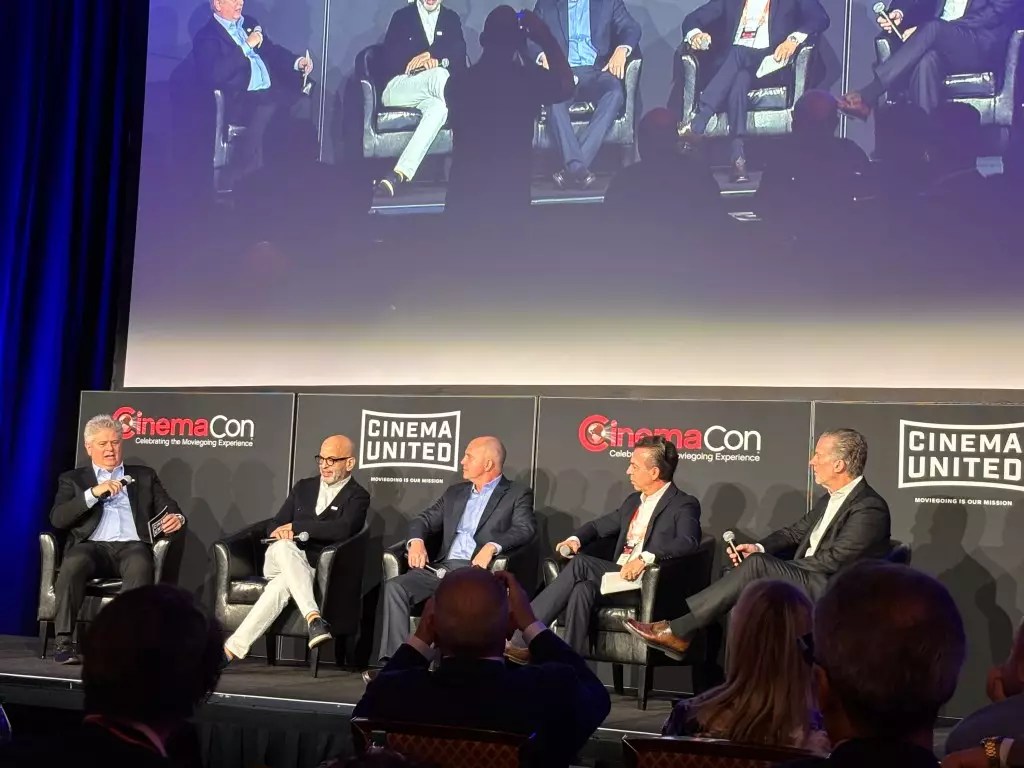The film industry, once a bastion of creativity and cultural significance, now finds itself ensnared in a web of escalating costs and unpredictability. With Hollywood’s traditional giants helmed by executives like Jeff Goldstein of Warner Bros. Pictures, the worrisome trend is shifting from artistic vision to financial viability. Goldstein encapsulates the grim reality: “The economics of making motion pictures are more problematic now than ever.” This observation is not merely anecdotal; it highlights a seismic shift in the filmmaking process, where studios are grappling with the relentless demands of profitability against a backdrop of increasing operational costs.
For filmmakers and studio executives alike, asking “What’s the value proposition?” has become a mantra. The financial stakes have never been higher, with a cost to produce full-length films soaring into the hundreds of millions. In a landscape where streaming services can write checks with abandon, traditional studios are being forced to justify spending in a radically different way. The clamor for hits is not just noise—it’s an existential crisis that threatens to suffocate artistry under the weight of financial metrics.
Marketing Madness: A Fragmented Audience
The plummeting effectiveness of marketing in an ever-fractured media landscape is the Achilles heel of modern cinema. Goldstein’s pointed remarks about spending “much greater than we’ve ever spent before” while reaping lower returns exposes a painful truth: the rules of engagement with audiences have changed beyond recognition. The once-reliable strategies of broad marketing campaigns are being rendered obsolete by niche-focused algorithms and social media dynamics that can amplify a film’s shortcomings in real-time.
“Today, you have to hit a bullseye,” he states, underscoring the unrealistically precise targeting required to attract a diverse and scattered viewership. Relying on the success of marketing campaigns once utilized by previous blockbusters feels almost nostalgic. The immediacy of social reaction can spell doom for an idea that took years to develop, shifting the balance of power into the hands of a few vocal critics rather than the discerning masses.
Moreover, as the audience’s preferences grow increasingly stratified, the pressure to cater to disparate niches only amplifies the challenge. The urgency of delivering a satisfactory viewer experience, coupled with broke marketing strategies, has led to a relentless cycle of experimentation that stretches thin the budgets of these legacy studios.
The Cinema Experience: A Risky Balance
Yet, the conundrum extends beyond just financial metrics and marketing woes. Paramount’s Mark Viane echoes a growing angst within the industry, probing into whether the cinematic experience itself is being degraded. With the influx of pre-show advertisements and other distractions, the audience may feel disenchanted rather than entertained, a fate reminiscent of a restaurant whose service diminishes alongside quality. When moviegoers are potentially turned away by what they perceive as a crowded or tedious environment, the repercussions could spell disaster for box office returns.
Audiences are no longer satisfied just by visually captivating content; they seek a holistic experience that resonates on emotional and social levels. The collective nostalgia for a simpler time in cinema—characterized by compelling stories over complex marketing tactics—sits at the heart of these discussions. The question arises: how can studios evolve without compromising the integrity and allure of the theatrical experience?
The Urgency of Restructuring the Industry
Against this backdrop, industry leaders have been forced to confront tough questions about their strategies. How does one bridge the gap between creative innovation and financial prudence? Goldstein and his peers understand that enormous changes must occur at structural levels for studios to remain afloat. “We have to figure out how we can right the ship,” he says—a statement that is both a call to action and a warning that the industry cannot afford complacency.
As film studios wrestle with their identities, the distinct lines between streaming and theatrical releases blur. With global audiences consuming content at an unprecedented pace, the status quo is no longer tenable. The call for a renaissance in Hollywood provides an opportunity for creative freedom but demands fiscal responsibility. The balance may appear precarious, yet the potential rewards of this recalibration could ultimately heal the fractures within the film industry.
In an era defined by complexity, mediocrity is no longer an option. The success of contemporary cinema will hinge upon bravery—in storytelling, in marketing, and in the experiences crafted for audiences. As the industry faces its most daunting challenges yet, those who embrace transformation will emerge as the true pioneers of the next cinematic wave.


Leave a Reply